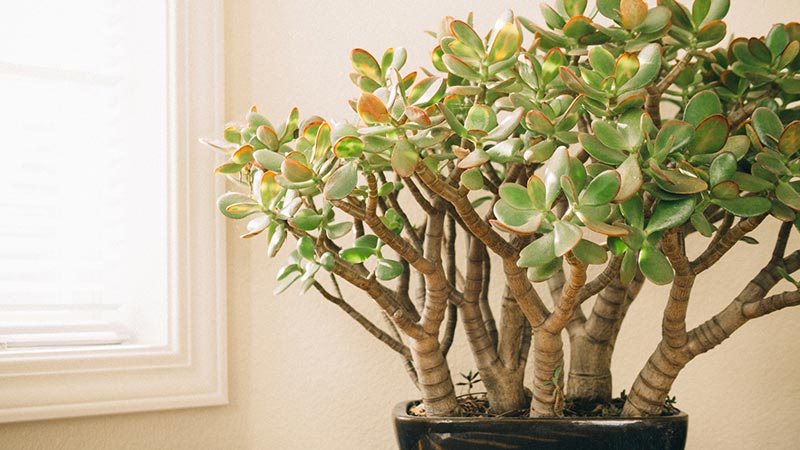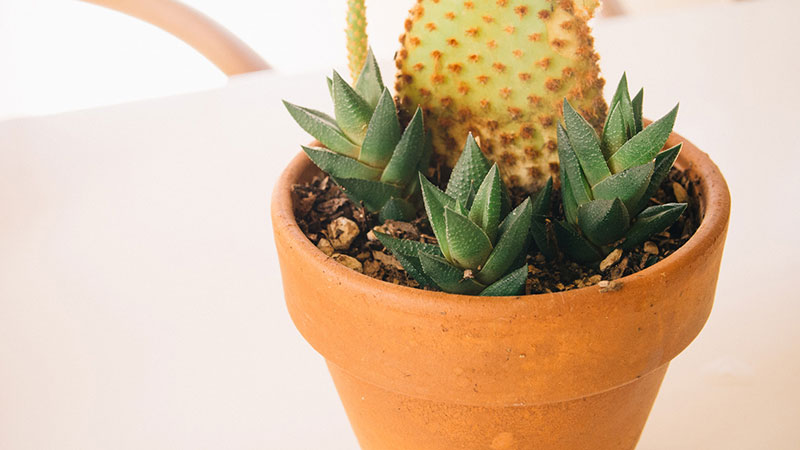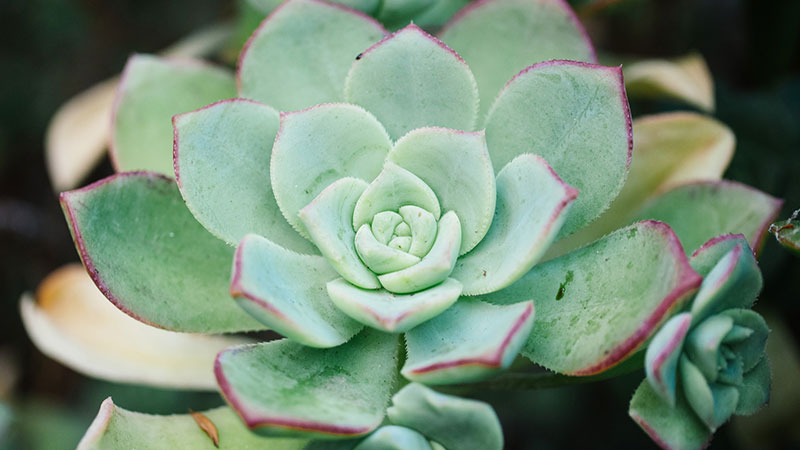Are Succulents Easy to Take Care of
By Linda Ly
What are Succulents?
Succulents are plants with fleshy, thickened leaves and/or swollen stems that store water. The word "succulent" comes from the Latin word sucus, meaning juice or sap. Succulents are able to survive on limited water resources, such as dew and mist, making them tolerant of drought. There are many different species and cultivars of succulents spanning several plant families, and most people associate succulents with Cactaceae, the cactus family. (Keep in mind, however, that while all cacti are succulents, not all succulents are cacti.)

Best Succulents to Grow Indoors
- Jade plant (Crassula ovata)
- Christmas kalanchoe (Kalanchoe blossfeldiana)
- Mother-in-law tongue or snake plant (Sansevieria trifasciata)
- Crown of thorns (Eurphorbia milii)
- Medicine plant (Aloe vera)
- Christmas cactus (Schlumbergera x buckleyi)
- Zebra cactus (Haworthia fasciata)
- Panda plant (Kalanchoe tomentosa)
- String of bananas (Senecio radicans)
- String of pearls (Senecio rowleyanus)
- Hens-and-chicks (Sempervivum tectorum or Echeveria elegans)
- Pencil cactus (Euphorbia tirucalli)
- Burro's tail (Sedum morganianum)
- Pebble plant or living stone (Lithops)

How to Grow Succulents Indoors
Because of their special ability to retain water, succulents tend to thrive in warm, dry climates and don't mind a little neglect. This makes them well adapted to indoor growing and ideal for people desiring low-maintenance houseplants. If you're choosing succulents for the first time, follow these steps for successful care of your new plants.
-
- Choose an appropriate succulent for your indoor conditions.
Most succulents like direct sunlight, but if all you have is a shaded corner in your house, go with low light-tolerant plants like mother-in-law tongue. If you plan to grow your succulent in a hanging planter, a trailing variety like string of bananas is a great choice. Always read the plant labels to determine the sunlight needs, size, and spread of your succulents.
-
- Provide a very well-draining potting medium.
Nurseries always plant their succulents in soil that's too rich and retains too much moisture, so you'll want to repot your succulent as soon as you bring it home. Start with a coarse potting mix with good drainage and aeration. You can find special cactus and succulent mixes at the nursery, or even use an African violet mix. To further improve drainage and prevent compaction, add perlite or pumice to the cactus or African violet mix (up to 50% of the total potting mix, depending on your particular succulent's moisture needs). Always wet the mix before using to ensure it's evenly moist.
-
- Choose your container.
When repotting, use a container that has a drainage hole and is at least 1 to 2 inches larger than the nursery container. Avoid glass containers (such as mason jars or terrariums) as a long-term potting solution, as they don't allow roots to breathe and can cause root rot over time. Fill the bottom one-third of the container with pre-moistened potting mix, then position your plant inside and backfill with more pre-moistened potting mix.
-
- Place the potted succulent in a sunny location.
Most succulents prefer at least 6 hours of sun per day, so try to place them near a south- or east-facing window. You may notice your succulents becoming spindly or stretching toward the light if they don't get enough sun.
-
- Allow the potting mix to dry out between waterings.
The number-one mistake many people make with succulents is overwatering them. It's best to water more, but less frequently. Saturate the potting mix thoroughly (while ensuring water flows out of the drainage hole properly) but allow the mix to dry out slightly before the next watering. If the potting mix stays consistently wet every day, the plant may eventually die.
-
- Fertilize your succulents at least once a year.
The plants benefit most from fertilizer in the spring (when the days get longer and new growth begins), and again in late summer. Use a balanced, all-purpose, water-soluble fertilizer (such as 8-8-8 or 10-10-10) diluted to half the strength recommended on the package instructions. There is no need to fertilize succulents in winter when they're semi-dormant., They don't need the nutrient boost because they are not actively growing.

Additional Succulent Care Tips
Can you use sand to plant succulents?
Thought it may seem like succulents thrive in sand out in the wild, they actually prefer loose, rocky soil and need nutrients to grow well. When used on its own, sand has a tendency to compact over time, causing too much water retention in a container. The best potting medium for a succulent is one specially formulated for cacti and succulents, or a well-draining mix of potting soil, coarse sand, and perlite/pumice.
Can you start succulents from seeds?
Yes. Succulent seeds can be started indoors in light, moist soil (much like other plant seeds), but grow more slowly and generally don't reach transplant size until six months to a year after germinating.
Why are my succulent's leaves falling off?
Like many plants, the lowest leaves on the stem (closest to the potting mix) will eventually shrivel up and drop. This is normal and nothing to worry about. If the topmost leaves are dying, it could indicate overwatering, pests, or disease.
Source: https://gilmour.com/growing-succulents-indoors
0 Response to "Are Succulents Easy to Take Care of"
ارسال یک نظر